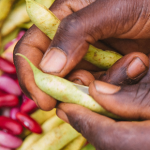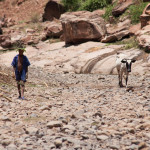The United Nations Framework Convention on Climate Change will convene the 23rd annual Conference of the Parties (COP) meetings to advance the implementation of the Paris Climate Accord. IFPRI researchers will join global discussions to provide cutting-edge research on the threats that climate change poses to food systems as well as some promising strategies for mitigating […]
Climate change and variability: What are the risks for nutrition, diets, and food systems?
By Jessica Fanzo, Rebecca McLaren, Claire Davis, and Jowel Choufani
The paper uses a food systems approach to analyze the bidirectional relationships between climate change and food and nutrition along the entire food value chain. It then identifies adaptation and mitigation interventions for each step of the food value chain to move toward a more climate-smart, nutrition-sensitive food system. The study focuses on poor rural farmers, a population especially vulnerable to the adverse effects of climate change on nutrition, although we recognize that there are other vulnerable populations, including urban poor and rural populations working outside of agriculture. Although this report does not explicitly exclude overweight and obesity, it focuses primarily on undernutrition because this nutritional status is currently more prevalent than overnutrition among our target population.
Taxing red meat may cut emissions and disease
Growth in agricultural productivity and expanding markets have made more food available to more people than ever before. The options available to the average consumer visiting a supermarket are richer and more varied than at any time in history. But this abundance comes at a cost to our health and the planet.
Obesity, diabetes, and hypertension are increasing significantly across the world, particularly in middle- and high-income countries. Meanwhile, food production is a major contributor to climate change: agriculture (excluding land use change) accounts for 11 percent of global carbon emissions.
Future scenario development now added to Cambodia’s policy landscape
Cross-post from CCAFS
Today, Cambodia’s Climate Change Priorities Action Plan for Agriculture (CCPAP) features a scenario-guided priority-setting for Cambodia in the face of climate change, and a strong focus on climate-smart agriculture. In the plan, key practices and financial allocations have been set up to translate those words into actions.
New paper analyses country strategies that reduce drought-related risks for farmers
By Nicola Cenacchi, IFPRI
Droughts are a common occurrence worldwide, but major concerns are growing over their long-term disruption to global agricultural production. This year alone, droughts have damaged the coffee industry in Brazil and caused the death of hundreds of cattle, and losses to staple crops in Central America, triggering food shortages, higher prices, and ultimately threatening the food security of poor households across the region.





